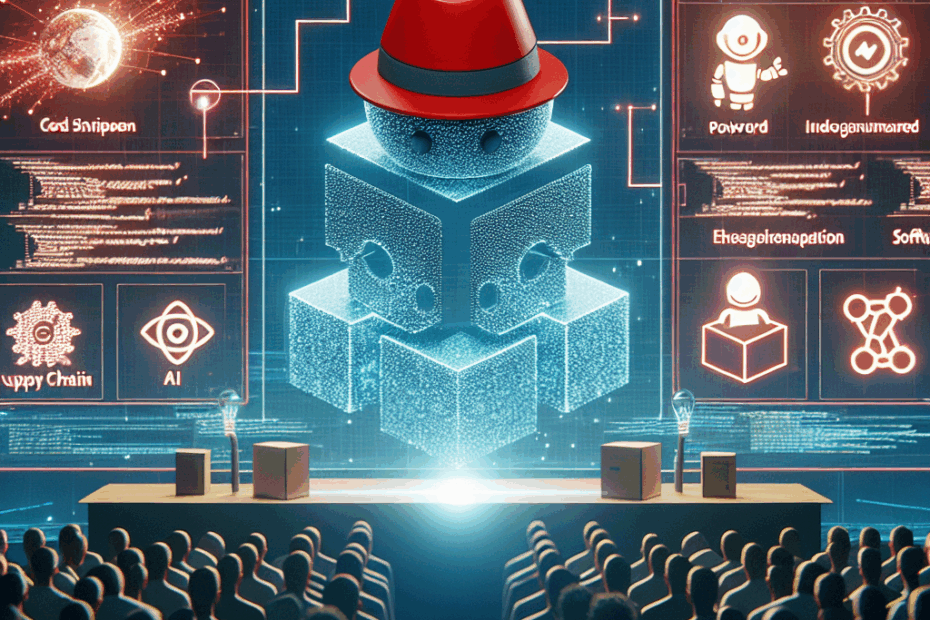“`html
Red Hat Makes Life Easier for App Builders!
Hey everyone, John here! Today we’re talking about something super cool from Red Hat called the Red Hat Advanced Developer Suite. Think of it as a toolbox packed with awesome gadgets that help people build and improve applications more easily.
What’s This “Suite” All About?
This suite is all about making the process of building applications smoother and more efficient. It’s like giving construction workers better tools and blueprints to build a house faster and stronger. It includes things like an internal developer platform, tools for secure software, and ways to simplify getting started and improving existing applications.
It also works hand-in-hand with Red Hat OpenShift, which is like a playground in the cloud where developers can build and test their creations. The suite gives developers tools to work together on building what Red Hat calls “golden paths.”
Lila: John, what are “golden paths”? It sounds like something from a fairy tale!
That’s a great question, Lila! Think of “golden paths” as pre-made templates that have all the basic stuff needed to build an application. It’s like a LEGO set with all the pieces and instructions ready to go. These templates include the basic building blocks (infrastructure), services that help the application run, tool chains (sets of tools that work together), and best practices – all transparently, which means developers can see how it all works under the hood.
The Red Hat Advanced Developer Suite also plays well with Red Hat’s AI tools, like Red Hat AI Inference Server, Red Hat Enterprise Linux AI, and Red Hat OpenShift AI. This means you can create apps that use AI while keeping security in mind. Plus, it’s designed for building cloud-native applications, which are apps specifically designed to run in the cloud.
What’s Inside the Toolbox?
This suite is like a multi-tool for developers, combining several Red Hat offerings into one package:
- Developer Hub: Think of this as a central meeting place or portal for developers within a company. It’s built on the Backstage developer portals framework.
- Trusted Profile Analyzer: This helps manage all the different parts of a software project, like a list of ingredients in a recipe. It also helps identify potential weaknesses or security risks.
- Trusted Artifact Signer: This is like a digital signature for software. It uses something called the Sigstore project to make sure the software hasn’t been tampered with and is safe to use. It’s especially useful for things like container images (packages that contain everything an application needs to run) and binaries (compiled code).
Lila: John, you used a bunch of terms I don’t understand! What’s a “software bill of materials” and “container images”?
Okay, Lila, great questions! A “software bill of materials” (often shortened to SBOM) is just a list of all the different components that make up a piece of software. Think of it like the ingredient list on a food package, but for software. It tells you exactly what’s inside. And “container images” are like self-contained packages that have everything an application needs to run – the code, the libraries, the settings, everything! They make it really easy to move applications between different environments (like from your computer to the cloud) and ensure they run the same way everywhere. It’s like shipping a whole kitchen, ready to use, instead of just the recipe.
Plays Well with Others
The Red Hat Advanced Developer Suite isn’t a loner; it integrates with other popular tools like Red Hat OpenShift Pipelines and Red Hat OpenShift GitOps. These tools help automate the process of building, testing, and deploying software (CI/CD). Users can also use Podman Desktop to manage containers on their local computers and Red Hat IDE Plugins to connect to Red Hat’s ecosystem within their favorite code editors. Plus, Red Hat OpenShift Dev Spaces gives developers a cloud-based environment for coding, making it easier to get started.
Lila: John, what does CI/CD mean?
Sure, Lila. CI/CD stands for “Continuous Integration/Continuous Delivery” (or sometimes “Continuous Deployment”). Imagine a factory that makes toys. Continuous Integration is like constantly checking that each toy part fits together correctly as it’s being made. Continuous Delivery is like having a system in place to quickly and easily ship those toys to stores once they’re ready. It’s all about automating the process of building, testing, and releasing software, so updates can happen more often and with fewer problems.
When Can I Get It?
The Red Hat Advanced Developer Suite was announced in May and is expected to be available starting July 1.
John’s Thoughts
I think this suite is a smart move by Red Hat. By bundling these tools together, they’re making it easier for developers to build and deploy applications, which can save time and money. Anything that simplifies the development process is a win in my book.
Lila’s Perspective
Wow, this sounds really complicated! But I can see how having all these tools in one place could be helpful for developers. I still have a lot to learn, but I’m excited to see how this suite makes building applications easier.
This article is based on the following original source, summarized from the author’s perspective:
Red Hat readies Advanced Developer Suite
“`
